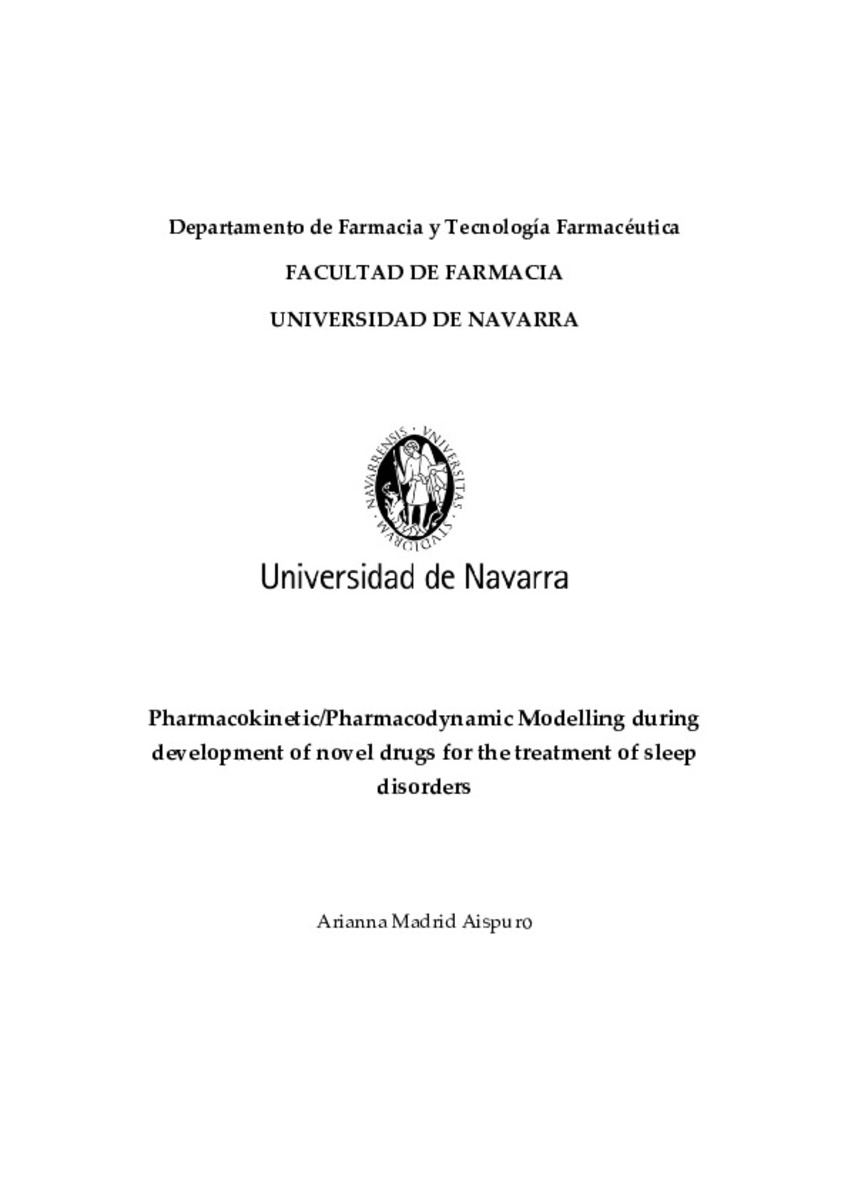Full metadata record
| DC Field | Value | Language |
|---|---|---|
| dc.contributor.advisor | Velez, N. (Nieves) | - |
| dc.contributor.advisor | Troconiz, I.F. (Iñaki F.) | - |
| dc.creator | Madrid, A. (Arianna) | - |
| dc.date.accessioned | 2015-04-29T16:36:33Z | - |
| dc.date.available | 2015-04-29T16:36:33Z | - |
| dc.date.issued | 2015 | - |
| dc.date.submitted | 2013-04-09 | - |
| dc.identifier.citation | MADRID, A. “Pharmacokinetic/Pharmacodynamic modelling during development of novel drugs for the treatment of sleep disorders”. Trocóniz, I. y Vélez, N. (dir.). Tesis doctoral. Universidad de Navarra, Pamplona, 2013 | es_ES |
| dc.identifier.uri | https://hdl.handle.net/10171/38190 | - |
| dc.description.abstract | The goal of the present work was to describe the sleep effects of the hypnotic drug zolpidem in rats using a semi-mechanistic pharmacokinetic-pharmacodynamic (PK/PD) Markov-chain model. Data were obtained from healthy Sprague-Dawley rats in which EEG was continuously recorded for at least two days of alternating dark/light cycles. For each 10 second interval, EEG data were converted into AWAKE, REM or NREM stages. After a baseline period, methylcellulose (MC), zolpidem at doses of 10, 20 or 30 mg/kg was administered orally. The time course of the nine possible transition probabilities was described using a non-homogeneous Markov chain model based on piecewise multinomial logistic functions. Model building was performed in three steps: (i) baseline data was described first, then (ii) the model accounting for the MC effects was built, finally (iii) the PK/PD model describing zolpidem effects was developed. Exploration of the time course of raw transition probabilities revealed that zolpidem elicited an initial time dependent decrease in the transition probability from NREM to awake, and an increase at later times which is interpreted as a rebound effect. Drug effects including the rebound phenomena were described with a turnover feedback model. The current analysis shows an application of the multinomial logistic approach applied to Markov chain models. The model presented here represents an integrated model including baseline, saline, and drug effect models. This type of approach supports the identification and the quantitative description of feedback mechanisms, and represents a promise approach to extract pharmacodynamic characteristics of different classes of sleep drugs. | es_ES |
| dc.language.iso | eng | es_ES |
| dc.publisher | Servicio de Publicaciones de la Universidad de Navarra | es_ES |
| dc.rights | info:eu-repo/semantics/openAccess | es_ES |
| dc.subject | Materias Investigacion::Farmacia::Farmacia y farmacología | es_ES |
| dc.subject | Sleep stages | es_ES |
| dc.subject | NONMEM | es_ES |
| dc.subject | Markov Model | es_ES |
| dc.subject | Zolpidem | es_ES |
| dc.subject | Matemáticas | es_ES |
| dc.subject | Farmacodinamia | es_ES |
| dc.title | Pharmacokinetic/Pharmacodynamic modelling during development of novel drugs for the treatment of sleep disorders | es_ES |
| dc.type | info:eu-repo/semantics/doctoralThesis | es_ES |
Files in This Item:
Statistics and impact
Items in Dadun are protected by copyright, with all rights reserved, unless otherwise indicated.






